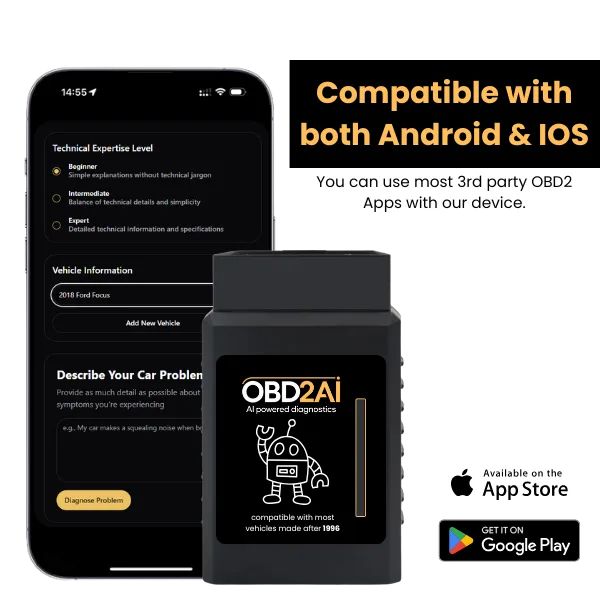OBD2 stands for On-Board Diagnostics II, introduced in the mid-1990s, it’s a standardised computer system that watches over your vehicle’s vital systems, particularly focusing on anything that might affect emissions and engine performance.
A Brief History: From OBD1 to OBD2
The story of on-board diagnostics begins in the 1960s when Volkswagen introduced the first basic computer system that could scan car problems. However, the real breakthrough came in the early 1990s with OBD1. This first version was relatively simple and varied between car manufacturers – imagine each car brand speaking its own language that only their mechanics could understand.
In 1996, everything changed when OBD2 became mandatory in the United States. This standardized system meant that all cars would now “speak the same language,” making it much easier for mechanics and car owners to understand what’s happening under the hood. The system spread globally, becoming required in Europe by 2001 and gradually being adopted worldwide.
Is Your Car OBD2-Compatible?
Your car likely OBD2 compatible if it was sold in:
- America: 1996 or newer (gasoline vehicles), 2004 or newer (diesel)
- EU: 2001 or newer (petrol), 2004 or newer (diesel)
- Australia: 2006 or newer
- Japan: 2002 or newer
- Canada: 1998 or newer
How Does OBD2 Actually Work?
Think of OBD2 as your car’s nervous system. Here’s how it functions:
- Constant Monitoring: The system uses sensors throughout your car to keep track of everything from engine performance to emissions.
- Data Processing: Your car’s Engine Control Unit (ECU) – essentially its brain – takes all this information and processes it.
- Problem Detection: When something isn’t working correctly, the system creates what’s called a Diagnostic Trouble Code (DTC) and typically turns on your check engine light.
- Storage: These codes are stored in the car’s computer memory, waiting to be read by a diagnostic tool.
Finding and Using the OBD2 Port
The OBD2 port (where you plug in diagnostic tools) is usually located under the dashboard on the driver’s side. It looks like a trapezoid-shaped socket with 16 pins inside. Think of it as a USB port for your car – it’s where all the diagnostic information can be accessed.
Understanding OBD2 Scanners
There are several ways to read your car’s OBD2 information:
Basic Code Readers:
- Simplest and most affordable
- Tell you the basic error codes
- Usually just read and clear codes
Advanced Scan Tools:
- More detailed information
- Can show real-time data
- Often used by professional mechanics
What OBD2 Can Tell You
An OBD2 system monitors and can report on:
- Engine problems
- Transmission issues
- Fuel system status
- Emissions system performance
- Various sensor readings
- Real-time performance data
Real-World Benefits
- Early Problem Detection: Often catches issues before they become serious and expensive
- Cost Savings: Helps avoid unnecessary garage visits for minor issues
- Emissions Control: Ensures your car is running efficiently and environmentally friendly
- Informed Decisions: Provides data to make better maintenance choices
Future Developments
The automotive world is moving toward more connected and sophisticated diagnostic systems. Some newer cars already have advanced features like remote diagnostics and smartphone integration. It’s surprising that newer car models haven’t really addressed the diagnostics areas for users to make diagnosing your car easier. Nonetheless, the next generation of diagnostics (sometimes called OBD3) might include the ability to automatically report problems to repair shops or manufacturers, which could result in better customer service.
Whilst OBD2 scanners can help you understand your car better, they’re best used as part of a comprehensive maintenance strategy, they don’t replace the expertise of qualified mechanics for complex issues (unless you have the knowledge yourself).


